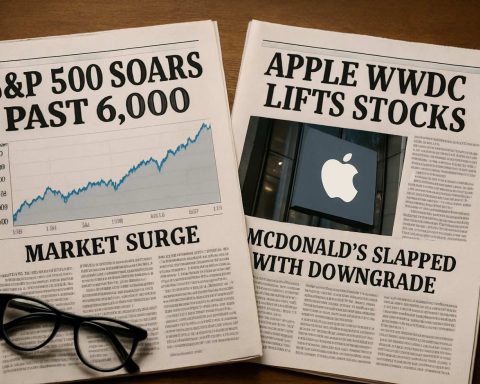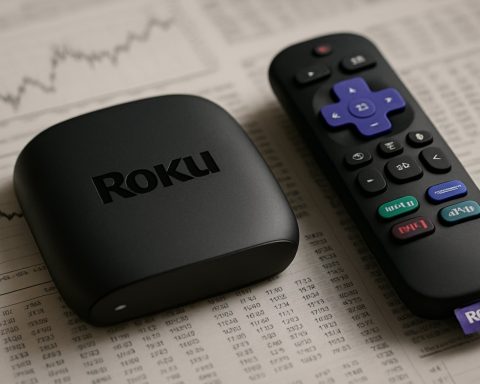- Starbucks faces mounting challenges to revive growth amid intense competition and economic uncertainty.
- Brian Niccol, with a history of revitalizing Chipotle, offers new strategies to transform the company.
- Same-store sales have underperformed for four consecutive quarters, signaling financial struggles.
- Niccol’s strategy includes trimming the menu by 30% and optimizing staffing for efficiency improvements.
- Trade tariffs and competition, especially in China, pose significant hurdles to growth initiatives.
- Starbucks’ stock valuation is high, with a price-to-earnings ratio of 37, indicating precarious investor optimism.
- The brand allure contrasts with financial forecasts, raising questions about sustainable growth.
- The upcoming performance will determine if Starbucks can regain its former success or if caution prevails.
Beneath the sleek green siren logo and the inviting aroma of freshly brewed coffee, Starbucks faces the daunting task of reigniting its growth story in a world that’s increasingly competitive and economically uncertain. The company’s path, paved by its reputation as an iconic global brand, is becoming more challenging to navigate.
The appointment of Brian Niccol, an experienced executive known for revitalizing Chipotle, brought a fresh perspective and an ambitious strategy to transform Starbucks’ fortunes. Yet, despite his efforts, the road to recovery is littered with obstacles.
Starbucks’ financial performance has lately struggled to dazzle. Its same-store sales—a key indicator that excludes changes from new store openings and closures—disappointed for a fourth consecutive quarter earlier this year. Niccol’s strategy includes bold moves like trimming 30% of the menu and optimizing staffing, hoping these changes will yield efficiency gains and improved margins.
However, economic headwinds like trade tariffs cast a long shadow over these initiatives. The coffee giant, known for its premium pricing, encounters intense competition, particularly from thrifty rivals in the burgeoning Chinese market. Investors, buoyed by a stock rally that saw Starbucks hitting a high of $117.46, now face the sobering reality of a lofty valuation.
The current valuation reflects a potent blend of past successes and future hopes. With a price-to-earnings ratio soaring to 37, the stock rests on precarious foundations, especially as resilient growth remains elusive. Investors find themselves in a precarious position, where the espresso shot of optimism may soon cool into a cup of indifference.
Starbucks represents a dynamic paradox. It captivates the imagination with its brand allure, yet its financial realities demand prudence. The key question remains: Can the company brew another successful chapter, or is its current valuation an unsustainable froth? A careful watch on its performance in the coming quarters will reveal whether Starbucks can recapture its former glory or if a cautious pause is the best course for investors for now.
Can Starbucks Brew New Growth Amid Economic Uncertainty?
Starbucks, renowned for its iconic branding and aromatic brews, stands at a critical juncture as it seeks to reignite growth in an increasingly competitive and economically uncertain landscape. Although the company holds a strong global presence, recent struggles highlight the challenges it faces in maintaining its growth trajectory.
Key Challenges and Strategic Moves
1. Leadership and Strategy: Under the guidance of Brian Niccol—credited with turning around Chipotle—Starbucks is attempting a fresh approach to stimulate growth. These strategies include streamlining operations by trimming 30% of the menu and optimizing staffing. While these changes aim to boost efficiency, economic headwinds pose significant challenges.
2. Financial Performance: Despite efforts to enhance performance, Starbucks has seen its same-store sales—a critical performance metric—disappoint for four consecutive quarters. This underperformance raises concerns for investors, particularly with a high stock valuation and a price-to-earnings ratio reaching 37.
3. Competitive Pressures: The competitive coffee market, especially in China, is a major hurdle for Starbucks. The emergence of cost-conscious competitors in this burgeoning market undercuts Starbucks’ premium pricing strategy.
4. Global Economic Factors: Economic factors, including trade tariffs, add another layer of complexity to Starbucks’ growth strategies, impacting both production costs and global operations.
Industry Trends and Predictions
– Digital Market Growth: The increasing shift towards digital sales channels—a trend fast-tracked by the pandemic—offers Starbucks opportunities to reach consumers directly via mobile apps and delivery services. Mastering this trend could unlock new growth streams.
– Sustainability Initiatives: With growing consumer demand for sustainability, Starbucks has pledged to reduce its carbon footprint and is investing in more sustainable business practices. This commitment aligns with prevailing consumer values and can enhance brand loyalty.
Real-World Use Cases
– Menu Optimization: Streamlining the menu helps reduce complexity in operations, improving service speed and consistency—key drivers of customer satisfaction.
– Staffing Optimization: Effective staffing not only enhances customer service but also controls labor costs, boosting profit margins.
Consumer Insights and Opportunities
– Leveraging Customer Loyalty: Starbucks’ loyalty program provides deep insights into customer preferences, which can be leveraged to customize marketing strategies and product offerings.
– Innovative Product Lines: Expanding into ready-to-drink coffee markets and alternative beverages like plant-based options could capture new customer segments.
Recommendations for Investors
– Monitor Key Metrics: Prioritize tracking same-store sales and digital engagement metrics for early indications of strategic success.
– Evaluate Geographic Expansion: Consider the implications of competition in key markets such as China, alongside Starbucks’ ability to adapt its model to local tastes and pricing pressures.
Actionable Tips for Starbucks Enthusiasts
– Explore Digital Apps: Make use of Starbucks’ mobile app for rewards and exclusive offers, enhancing your coffee consumption experience.
– Stay Informed on Sustainability Practices: Support sustainability by choosing products that align with eco-friendly initiatives Starbucks accentuates.
Starbucks’ journey to rediscover its growth narrative amid economic uncertainty symbolizes both a challenge and an opportunity. For more information about Starbucks and its global initiatives, visit the official Starbucks website. Whether you’re an investor, coffee enthusiast, or sustainability advocate, the ongoing transformation provides a fascinating case study in navigating modern business challenges.










